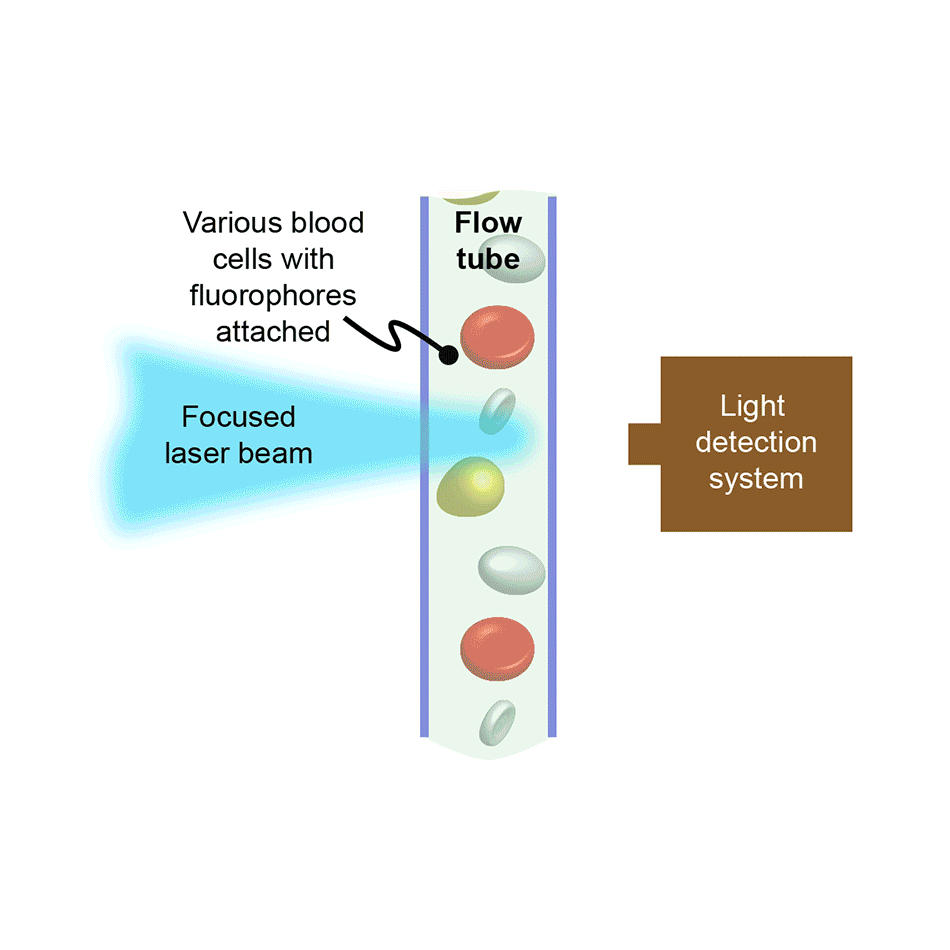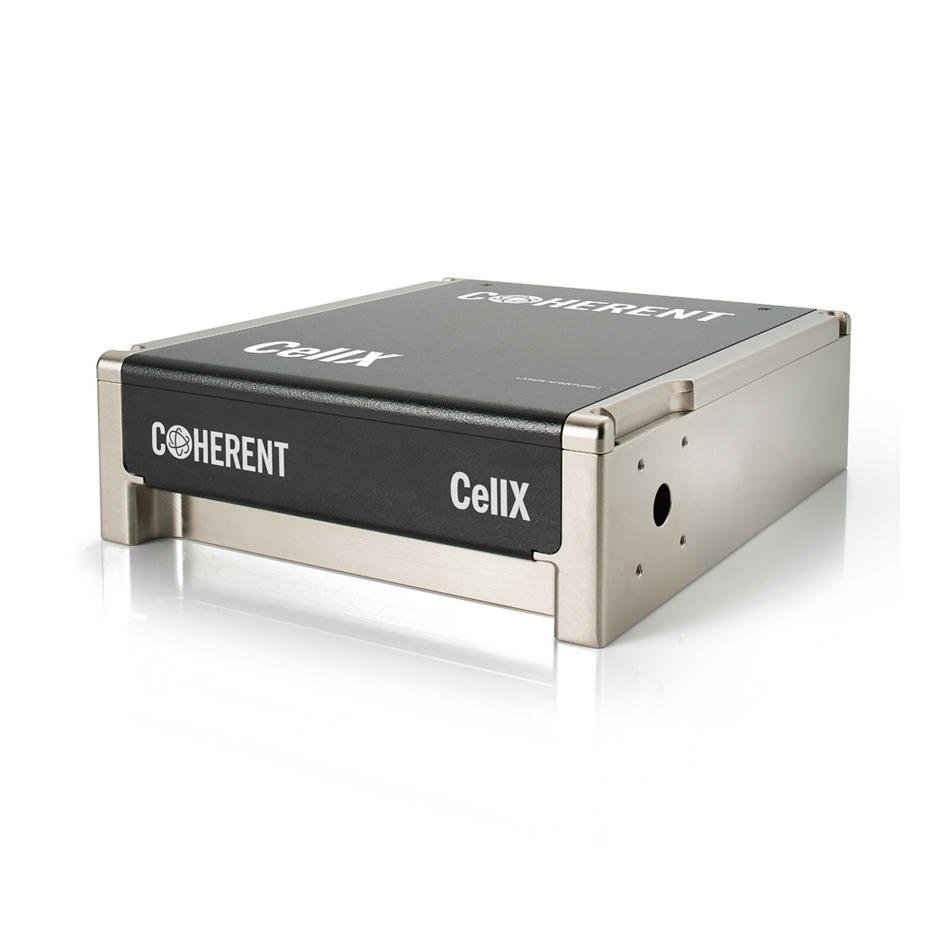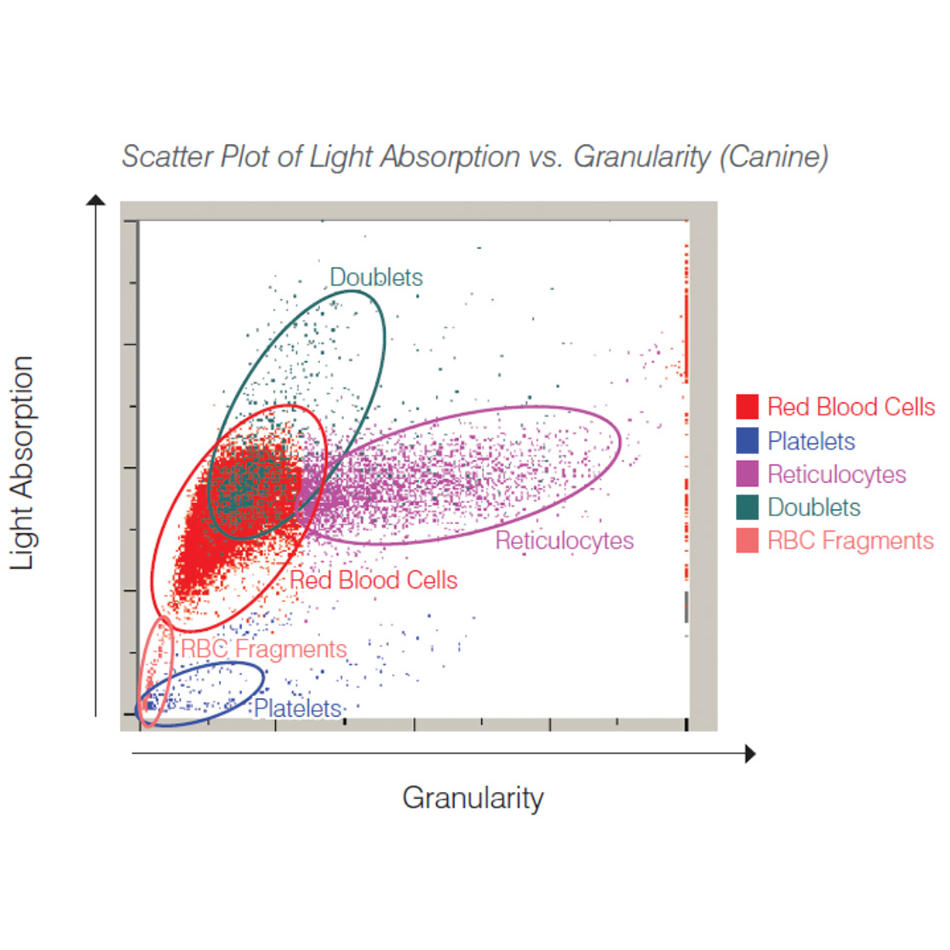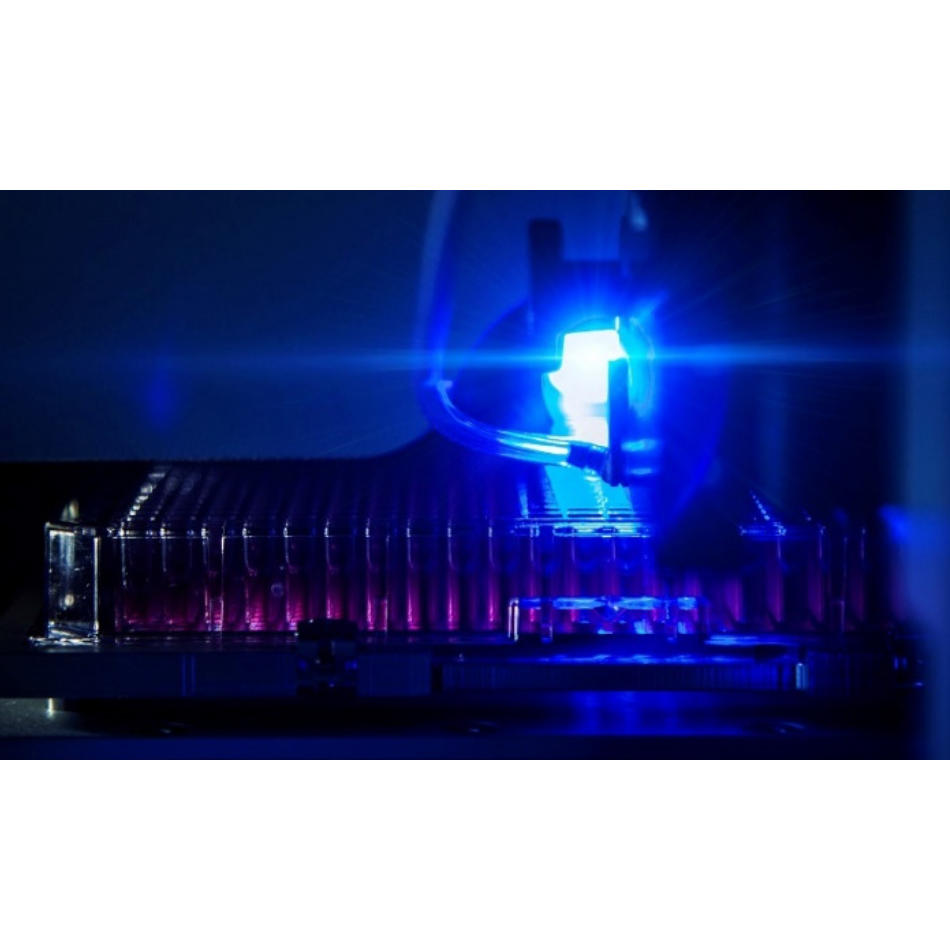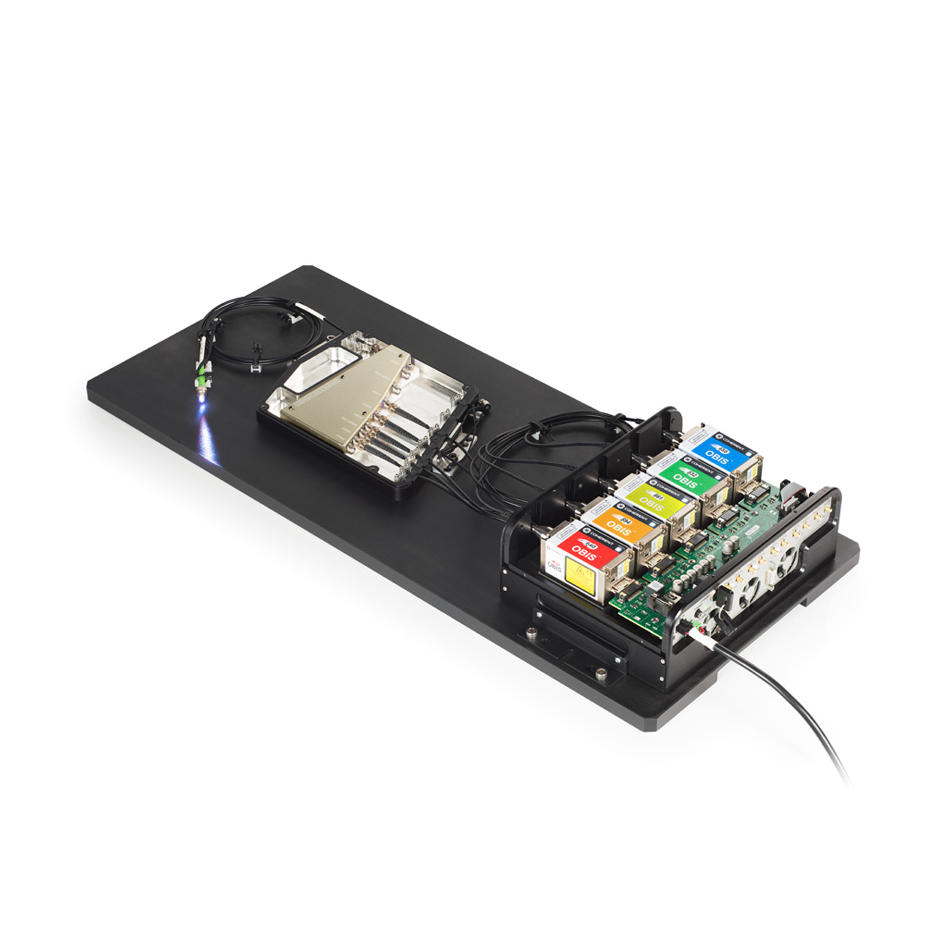Multi-Wellenlängen-Laser-Engines – die Zukunft der biowissenschaftlichen Instrumentierung
Die Hersteller von Instrumenten für die Biowissenschaften wie Durchflusszytometern gehen zunehmend von einzelnen Lasern zu Laser-Engines über – kompakte, anpassbare Baugruppen, die geformte, fokussierte Strahlen in anwendungsspezifischen Formaten liefern.
1. Juni 2022 von Coherent
Ein Laser erzeugt einen Lichtstrahl, entweder gepulst oder als Dauerstrich. Das weiß so ziemlich jeder. Und die Biowissenschaften sind ein riesiger Markt für Dauerstrichlaser. Aber praktisch keines der Instrumente oder Anwendungen in den Biowissenschaften nutzt den Strahl tatsächlich in der ursprünglichen Form, die der Laser erzeugt. Sie fokussieren ihn, formen ihn, kombinieren ihn mit anderen Laserstrahlen, koppeln ihn in Glasfasern ein, modulieren ihn (an/aus) usw., je nach Bedarf, um bestimmte Aufgaben zu erfüllen, vom Zählen von Blutzellen über Mikroskopbilder von lebendem Gewebe bis hin zur Gen-Sequenzierung.
Nun erweisen sich einige dieser Laserstrahl-Modifikationen als recht knifflig. Ein erfahrener Lasertechniker kann zum Beispiel mehrere Stunden brauchen, um einen einzelnen Laser in eine Hochleistungs-Lichtleitfaser einzukoppeln. Bei einem System, das mehrere Laserwellenlängen benötigt, können wir über Tage mühsamer Justierungsarbeiten sprechen.
Eine nicht sehr weit entfernte Galaxie
Was heute selbstverständlich erscheint, war eine revolutionäre Idee, als Coherent sich dieser Herausforderung stellte. Insbesondere die Bereitstellung von Baugruppen, die komplexe Aufgaben der Strahlmodifikation intern erledigen und die Laserleistung in der für die Anwendung erforderlichen Form liefern. Unser erstes Produkt, das diesen Weg beschritt, hieß Galaxy. Die Plug-and-Play-Funktionalität wurde für Geräte-OEMs und Laborlaseranwender entwickelt, die mehrere Wellenlängen in einer einzigen Faser benötigen. Zum ersten Mal konnten Laser in einem System mühelos innerhalb von Sekunden oder Minuten hinzugefügt oder ausgetauscht werden, anstatt Stunden oder Tage zu benötigen, und das alles mit Standard-Glasfaseranschlüssen.
Es erwies sich als perfekt für Laborforscher bei Anwendungen wie der konfokalen Mikroskopie, wo sie oft schnell zwischen verschiedenen Wellenlängen wechseln müssen, um verschiedene biochemische Ziele in derselben Probe abzubilden. Und es wurde auch von OEM-Instrumentenherstellern übernommen. Sie mochten es, weil es ihnen ermöglichte, Laser im laufenden Betrieb auszutauschen, entweder um zusätzliche Wellenlängen hinzuzufügen, die Leistung bei bestimmten Wellenlängen zu erhöhen oder um ausfallende Laser zu ersetzen, ohne dass eine Rücksendung ins Werk und damit verbundene Ausfallzeiten beim Kunden erforderlich waren.

Multi-Wellenlängen-Engines, auf die Sie sich verlassen können
Natürlich sind nicht alle biowissenschaftlichen Instrumente faserbasiert. Die Durchflusszytometrie ist ein herausragendes Beispiel, bei dem mehrere Laser durch konventionelle (Freiraum-)Optiken geformt und fokussiert werden. (Wenn Sie daran interessiert sind: Wir haben noch mehr über die Durchflusszytometrie geschrieben.) Deshalb haben wir uns als Nächstes daran gemacht, die Anforderungen dieser wichtigen Anwendung mit einem neuartigen Laser-Engine zu erfüllen. Wir haben es CellX genannt, da die größte Anwendung für die Durchflusszytometrie die Immunphänotypisierung ist.
Mit CellX haben Sie die Wahl zwischen bis zu vier verschiedenen Wellenlängen. Es umfasst die Laser selbst sowie die gesamte miniaturisierte Optik, die benötigt wird, um die fokussierte elliptische Strahlform zu erzeugen, die in einem Durchflusszytometer benötigt wird. Einige Gerätehersteller kombinieren sogar zwei dieser Module, um acht Wellenlängen für den neuesten Trend, die Multiparameter-Durchflusszytometrie, zu erhalten. Um CellX in eines ihrer Instrumente zu integrieren, entfernen OEM-Anwender einfach den elegant aussehenden Deckel, um eine Reihe von Einstellschrauben freizulegen, die eine unabhängige Kontrolle über den Fokus und die Platzierung der einzelnen Strahlen ermöglichen.

Blick in die Zukunft
Und wie geht es weiter? Wie wäre es mit einer Lösung, die die Vorteile der Glasfaser mit der Leistung der Freiraumoptik kombiniert? Was soll das bedeuten? Das Tolle an den Fasern ist, dass sie dauerhaft ausgerichtet bleiben – es ist ja nur ein einziges Stück Glas. Und es hat sich herausgestellt, dass die Ausrichtungsstabilität für einige OEMs von Instrumenten, die eine Freiraumoptik verwenden, ein großes Problem in der Praxis darstellt. Je nachdem, wie die Instrumente gehandhabt und verwendet werden, werden sie vielleicht alle 6 Monate zu einem Servicebesuch gerufen, nur um die Laserstrahlen neu auszurichten. Das liegt daran, dass herkömmliche Optikhalterungen aus Metallteilen und winzigen Schrauben bestehen, die unweigerlich irgendwann aus ihrer präzisen Ausrichtung geraten.

Coherent hat viele Laserprodukte, die in allen Arten von anspruchsvollen Anwendungen eingesetzt werden, einschließlich industrieller Produktionslinien. Diese liefern routinemäßig viele tausend Stunden wartungsfreien Betrieb, da sie mit der firmeneigenen PermAlignTM Technologie gebaut werden. Bei diesem Ansatz verwendet Coherent keine mechanischen Optikhalterungen – stattdessen wird jede Optik ausgerichtet und dauerhaft an ihrem Platz verklebt. Dies sorgt für unübertroffene Benutzerfreundlichkeit und Zuverlässigkeit, da nichts eingestellt werden muss und nichts verstellt werden kann.
Besuchen Sie uns hier, um die nächste Generation zu sehen, die dieselbe PermAlign-Technologie verwendet, nicht nur für den Bau von Lasern, sondern auch für die Lieferung des Strahls, den Sie in Ihrer OEM-Anwendung benötigen, wodurch das lästige und kostspielige Problem der Neuausrichtung vor Ort und der Ausfallzeiten entfällt. Das Endergebnis: Glückliche Instrumentenbauer, glückliche Instrumentenbenutzer.
Fazit: Beim Einsatz mehrerer Laser für eine beliebige Anwendung ist Einfachheit der Schlüssel, und die Laser-Engines von Coherent sind genau darauf ausgelegt.
Erfahren Sie mehr über Galaxy, CellX und unsere anderen Laser-Engines.
